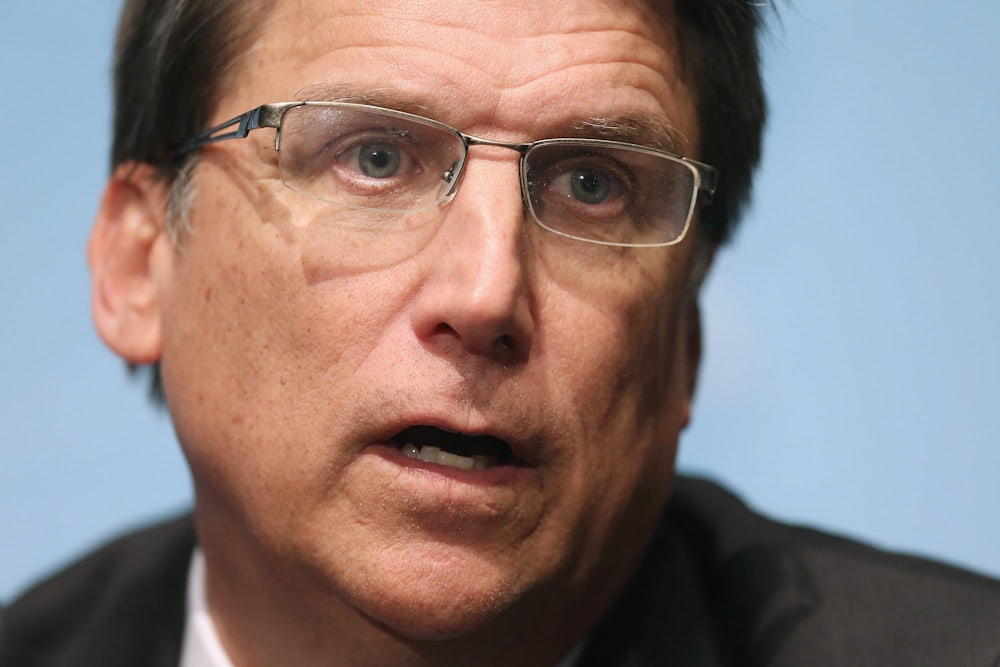When Ronald Reagan launched his bid for governor of California in 1966, igniting the conservative revolution that would reinvent the Republican Party, he promised “to clean up the mess at Berkeley.” He blamed the campus unrest on “a small minority of hippies, radicals and filthy speech advocates” whose leaders should “be taken by the scruff of the neck and thrown off campus—permanently.” After taking office, Reagan promptly fired University of California President Clark Kerr and axed the university system’s budget.
Half a century later, surveying the national public-university funding scene in 2015, The Chronicle of Higher Education bemoaned “the list of budgetary showdowns playing out between Republican governors and higher education.” While higher education’s state funding problems over the past decades have bipartisan causes, the targeting of these institutions’ budgets lately is much more common in states with GOP leadership—and may worsen yet.
Writing at Salon last year, Sean McElwee and Robbie Hiltonsmith analyzed a Grapevine study from Illinois State University and found “when Republicans take over governor’s mansions they reduce spending on higher education by $0.23 per $1,000 in personal income (a measure of the state’s total tax base). Each 1 percent increase in the number of Republicans in the legislature leads to a $0.05 decrease.” As Larry Sabato of the University of Virginia told U.S. News & World Report, “Most GOP elected officials believe that universities are hotbeds of Democratic support—and the voting patterns in most college precincts support this.”
During the Great Recession, virtually all states cut their higher education funding. But since the low point in 2009-10, states have raised their higher ed funding by an average of 10 percent. Wisconsin, on the other hand, has cut its spending by 4 percent. The day before Governor Scott Walker announced his candidacy for president, he signed a budget cut of $250 million for Wisconsin public universities. (He wanted to cut $300 million, but the legislature wouldn’t go that far.) He also wanted to gut the La Follette-era “Wisconsin Idea,” such that the university system’s mission was no longer “the search for truth” but “to meet the state’s workforce needs”—proposed changes that Walker unbelievably blamed on a “drafting error.”
Something similar occurred in Louisiana under another Republican governor who made a failed bid for the White House in 2016. “The scope of Louisiana’s disinvestment is both startling and unique,” mourned The Advocate of Baton Rouge. “Louisiana … according to national surveys, has cut higher education funding more than any other state since the slowdown began. State aid to universities here has been slashed by 55 percent.” At the start of the recession, Louisiana covered 60 percent of university expenses; under Jindal, it fell to 25 percent, with tuition rising accordingly.
In his last full year as governor, in 2015, Jindal wanted to cut the higher ed budget further, but the legislature resisted and took some money out of a rainy-day fund. (At the start of his presidential campaign, Jindal insisted that higher ed spending had risen slightly during his administration, a claim that The Washington Post’s Fact Checker awarded three Pinocchios.) The state’s budget suffered from the collapse of oil prices, but also from Jindal’s enthusiasm for tax cuts and business tax breaks.
Kansas, also still absorbing a huge tax cut, is among of the few states continuing to cut higher education funding in 2015-2016. There, legislative Republicans had an inspiration: Base cuts on the universities’ overall budgets rather than their instructional budgets, meaning deeper cuts for the research institutions—the University of Kansas and Kansas State. State Senator Jacob LaTurner explained that the “massive universities” could better handle the reductions—despite their being cut for the eighth consecutive year.
North Carolina was the first state to establish a state university. Things have been a little different since Republicans took over the state legislature in 2010, for the first time since Reconstruction. After $700 million in cuts during the recession, the system was cut another $63 million this year, despite a state budget surplus. Jenna Robinson of the John William Pope Center for Higher Education, which is funded by state GOP moneyman Art Pope, argued that such cuts would force universities to “eliminate wasteful and inefficient spending on campus.”
Jay Schalin, the center’s policy director, told The Nation that the universities’ problem isn’t money. “The main problem,” he said, “has to do with the ideas that are being discussed and promoted,” namely “multiculturalism, collectivism, left-wing post-modernism.” The concerns are similar to model legislation from the American Legislative Executive Council calling on state legislatures to establish philosophical “diversity” standards, overseeing what public university professors teach.
Conservative hostility toward public universities has never been higher. The 2016 Republican platform calls for “new systems of learning to compete with traditional four-year schools: Technical institutions, online universities, life-long learning, and work-based learning in the private sector.” Higher education, it threatens, “must be challenged to balance its worth against its negative economic impact on students and their families.”
Of course, relentless slashing of public funding increasing public universities’ dependence on tuition multiplies that negative impact on families. When Reagan pledged to clean up Berkeley, the University of California had no tuition and costs at other public universities were close to nominal. Now, public support has shrunk, and it’s considered normal for students to leave state universities with a debt that could exceed their postgraduate salary.
Many elements have contributed to this situation; in tough times, legislators have found it easy to tell themselves that universities, unlike prisons and kindergartens, can always raise tuition. But it also grows out of a rising attitude on the right that higher education is not so much a center of opportunity as a fat political target.
